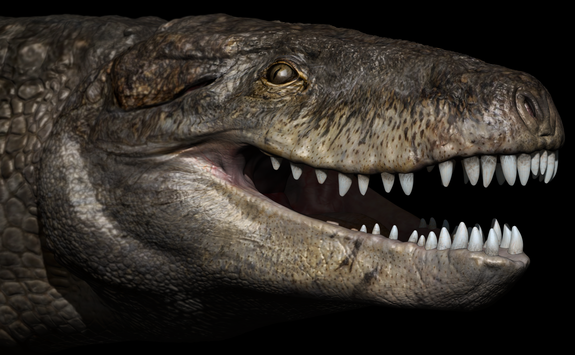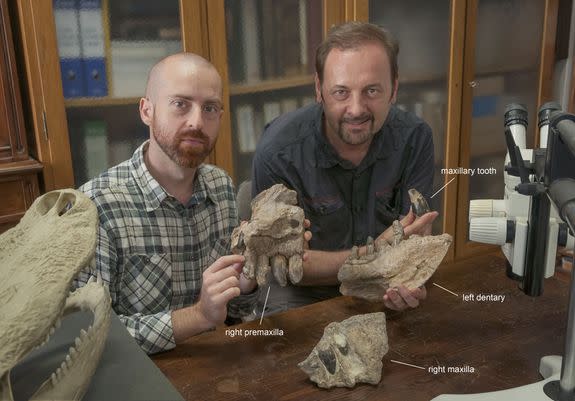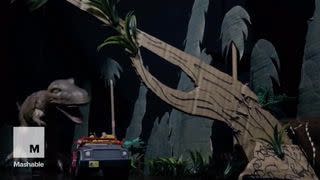A terrifying crocodile relative, with teeth like a T. rex, may have taken on dinosaurs

Meet "Razana," a gigantic lizard ancestor with the teeth of a T. rex and the body of a crocodile.
The prehistoric beast — formally named Razanandrongobe sakalavae — was likely a top predator in Madagascar about 170 million years ago, when dinosaurs also roamed the planet, a team of Italian and French paleontologists said Tuesday.
SEE ALSO: 99-million-year-old bird fossil has been found preserved in amber and it's truly exquisite
Razana had a massive jaw bone lined with enormous jagged teeth, which were similar in size and shape to those of a Tyrannosaurus rex, the scientists wrote in a study published July 4 in the journal PeerJ. That suggests the teeth were sharp enough to slice through hard tissue such as bone and tendon.

Image: Fabio Manucci
Although the ancient lizard's body was long and lean like that of a modern crocodile, Razana was made even more beastly by its deep skull shape and powerful straight limbs, the fossils indicated.
Paleontologists said Razana appears to be by far the oldest and largest representative of a group of croc-like animals called Notosuchians. Little is known about the origin and early evolution of this group, and until now, these animals hadn't been known to exist during the Jurassic period.
"Like these and other gigantic crocs from the [more recent] Cretaceous, Razana could outcompete even theropod dinosaurs at the top of the food chain," Cristiano Dal Sasso, the study's lead author and a researcher at the Natural History Museum of Milan, said in a statement.

Image: Giovanni Bindellini
The Madagascar fossils are thought to predate other forms of the Notosuchia by 42 million years, according to the study.
The Razana seems to have roamed the area when Madagascar, which is now an island, was separating from the giant landmass of southern continents known as Gondwana, Simone Maganuco, a co-author of the study, said in a statement.
"It represents a further signal that the Notosuchia originated in southern Gondwana," he said.
WATCH: Toy dinosaurs chase real people in this ’Jurassic Park’ remake

